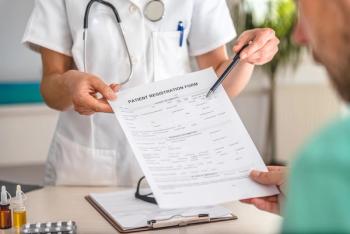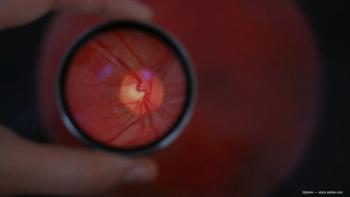
Sight Sciences releases cost-utility analysis comparing TearCare and cyclosporine 0.05% in dry eye
Key Takeaways
- TearCare System offers significant cost savings and improved health utility over cyclosporine 0.05% for MGD-associated dry eye disease.
- The analysis showed TearCare's annual per-patient costs were $4916 compared with cyclosporine's $5819, with higher QALYs of 0.76 vs 0.74.
TearCare is associated with greater health utility over time but also resulted in significant cost savings compared with CsA
Sight Sciences released the results from a cost-utility analysis (CUA) assessing the cost-effectiveness of the TearCare System compared with cyclosporine 0.05% (CsA) for the treatment of moderate to severe meibomian gland disease (MGD)–associated dry eye disease.
TearCare works by applying localized heat therapy through a “flexible, gentle design” that allows patients to blink naturally. It features Thermal-Activated Restorative Gland Expression Therapy technology that treats the root cause of dry eye by restoring the natural function of the meibomian glands.
According to the analysis results, TearCare is associated with greater health utility over time and also resulted in significant cost savings compared with CsA. The analysis was conducted from a US health care payer perspective using a 1-year time horizon.
Findings revealed that TearCare resulted in lower per-patient annual costs of $4916 and higher quality-adjusted life years (QALYs) of 0.76 compared with CsA annual costs of $5819 and 0.74 QALYs.
Nathan Lighthizer, OD, FAAO, the study's lead investigator and professor and dean at Northeastern State University Oklahoma College of Optometry, commented in a press release, “TearCare not only improves patient outcomes but also represents a more economically sustainable approach to managing MGD-associated dry eye disease. The demonstrated cost savings of over $900 per patient per year are significant in our current health care environment."
Results showed that assuming 2 procedures were conducted over a 1-year time horizon, TearCare demonstrated a cost-saving advantage over CsA, reducing per-patient costs by $903 annually. Additionally, patients receiving TearCare experienced an incremental QALY gain of 0.014 compared with those receiving CsA.
References
Sight Sciences announces the results of a cost-utility analysis demonstrating cost savings and greater health utility with the TearCare System compared to cyclosporine 0.05% for treating meibomian gland disease–associated dry eye disease. News release. Sight Sciences, Inc. July 30, 2025. Accessed August 4, 2025.
https://www.globenewswire.com/news-release/2025/07/30/3123898/0/en/Sight-Sciences-Announces-the-Results-of-a-Cost-Utility-Analysis-Demonstrating-Cost-Savings-and-Greater-Health-Utility-with-the-TearCare-System-Compared-to-Cyclosporine-0-05-for-Tre.html Sight Sciences TearCare. Sight Sciences. Accessed August 4, 2025.
https://www.sightsciences.com/us/tearcare/
Newsletter
Don’t miss out—get Ophthalmology Times updates on the latest clinical advancements and expert interviews, straight to your inbox.









































